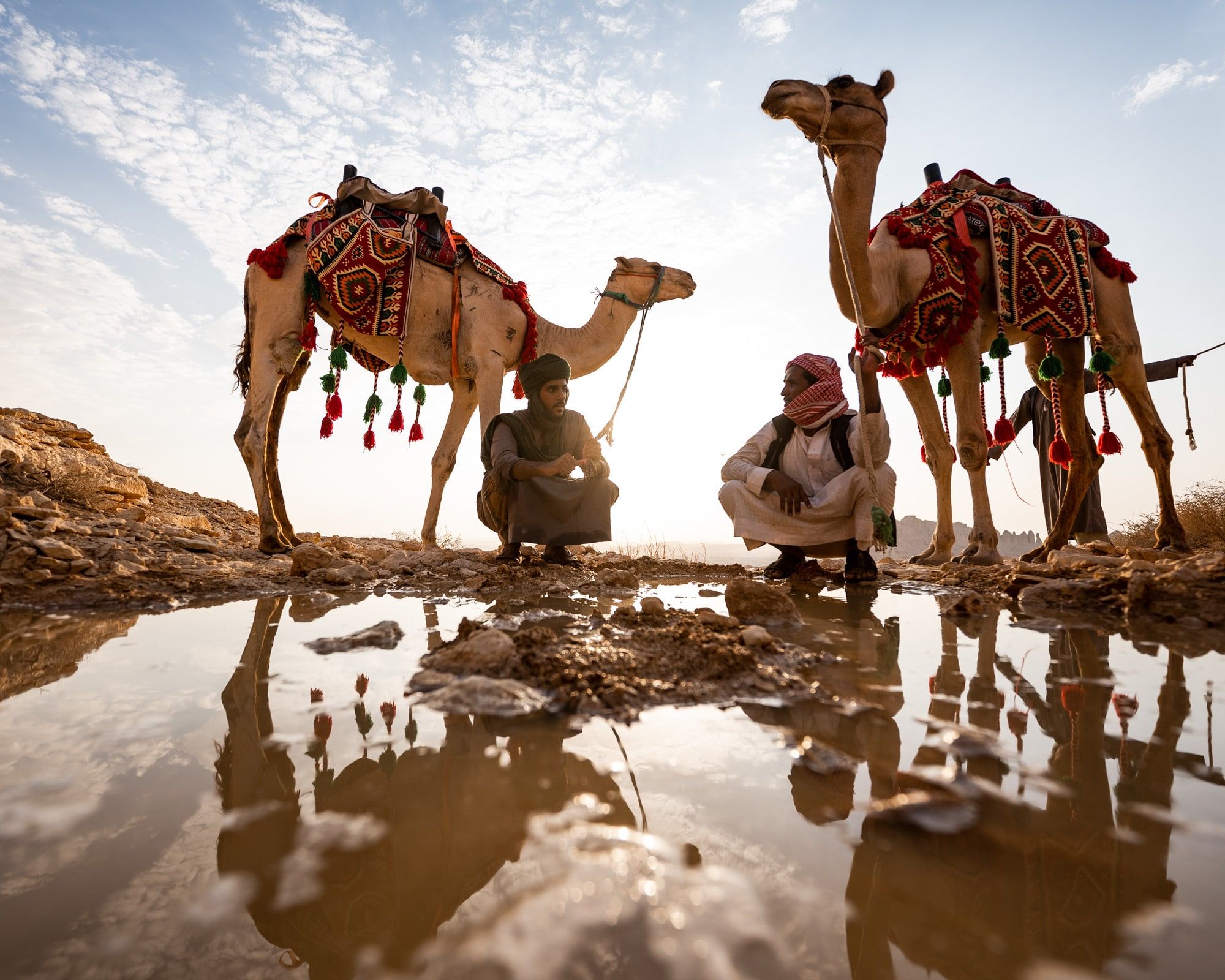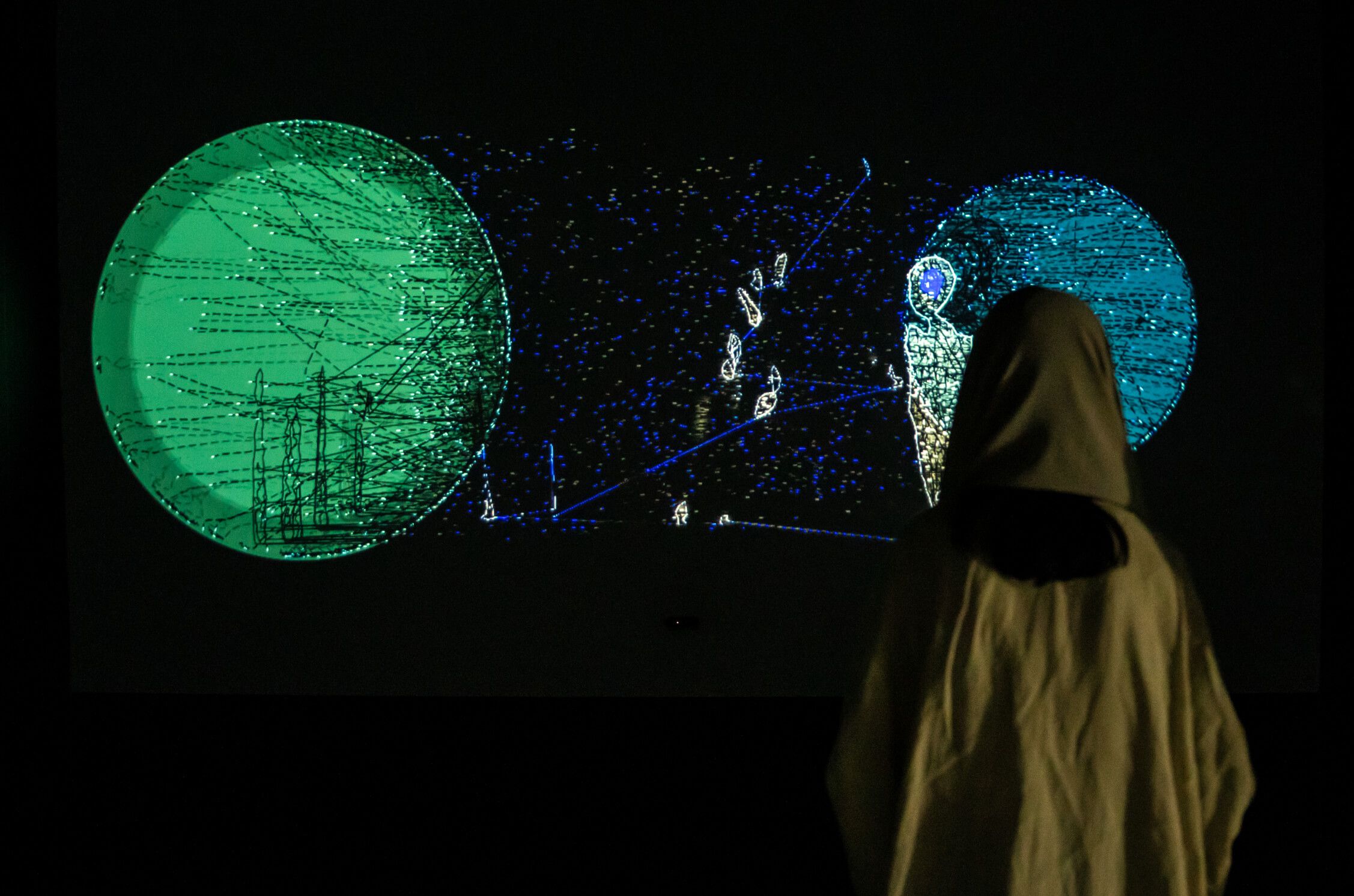Camel Chants
Camels and their riders. Images are from the Ithra film ‘Hadi Aleis’.
Camels are majestic, and may appear quite stoic at times, but in fact, are actually poetic creatures. They enjoy and respond to different kinds of music, chants, songs and, well, the right words.
‘Ikh! Ikh!’ makes camels kneel, while ‘Yaahh! Yaahh!’ urges them on, with the added ‘Hut! Hut!’ inspiring them to go forward faster.
There are books upon books about the philosophy, the language, the history and the culture of camels, and so it is no wonder that a traditional form of communicating with the somewhat moody camels finally made it to the prestigious list of Unesco’s Representative List of the Intangible Cultural Heritage of Humanity in 2022.
Called ‘Alheda’a’, it is defined on the Unesco website as “an oral polyphonic expression accompanied by gestures or musical instruments played by herders to communicate with their camels.”
The rhythmic expression is inspired by Arabic poetry, and the camel herder uses a unique repository of sounds and cries that the camels have become accustomed to in order to direct herds through the desert or pasture to an area for drinking, for feeding and milking preparation.
There is truly a special connection between the herders — in particular the singing camel guide —and the camels. The recognized voice and chants can soothe and calm, or excite and lead — depending on the camel’s mood of course— inspiring affectionate nuzzles, or diva-like stubborn stomps, by these big creature colloquially known as ‘Safeena al Sahra’ (ship of the desert).
What makes Alheda’a special, according to UNESCO's description of the practice, “is that it can also be used for swift assembly in case of immediate danger such as sandstorms. Herders train their camels to recognize the difference between right and left, to open their mouths when asked, and to kneel down to be ridden.”
This old traditional practice creates a very special and strong bond between the camels and their herders, as well as among the herders themselves. It is often an honor to become a camel guide, where this profession, or rather tradition, is inherited and transmitted within families and communities. It is not uncommon for children to pick up the trade as they accompany adult family members on daily trips of the camel caravan.
Whatever you may think of camels, and their wide variety of colors, breeds, personalities and stories, they are true characters, and symbolic of cultures and nations.

Camels and their riders. Images are from the Ithra film ‘Hadi Aleis’.


